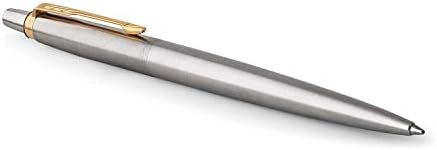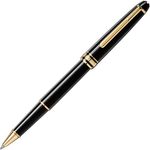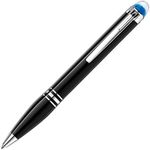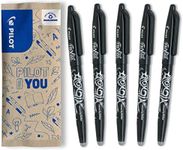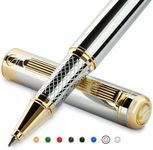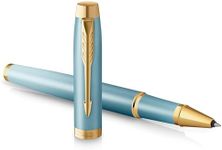Buying Guide for the Best Writing Pen
Choosing the right writing pen can significantly enhance your writing experience, whether you're jotting down notes, signing documents, or engaging in creative writing. The perfect pen should feel comfortable in your hand, provide smooth ink flow, and suit your specific writing needs. Understanding the key specifications of pens will help you make an informed decision that aligns with your preferences and requirements.Ink TypeInk type is crucial as it affects the writing experience and the appearance of the text. Common ink types include ballpoint, gel, rollerball, and fountain pen inks. Ballpoint pens use oil-based ink that dries quickly and is less likely to smudge, making them ideal for everyday use. Gel pens offer vibrant colors and smooth writing but may smudge if not given time to dry. Rollerball pens use water-based ink, providing a smooth writing experience with less pressure, suitable for long writing sessions. Fountain pens use liquid ink and offer a classic writing experience, often preferred by enthusiasts. Choose based on your writing style and the importance of ink drying time.
Tip SizeTip size determines the thickness of the line produced by the pen and can affect the precision of your writing. Common sizes include fine, medium, and broad. Fine tips (0.5mm or less) are great for detailed work and small handwriting. Medium tips (around 0.7mm) are versatile and suitable for most writing tasks. Broad tips (1.0mm or more) produce thicker lines, ideal for bold writing or signatures. Consider your handwriting size and the level of detail you require when selecting a tip size.
Grip ComfortGrip comfort is important for reducing hand fatigue during extended writing sessions. Pens come with various grip designs, such as rubberized grips, ergonomic shapes, or textured surfaces. A comfortable grip can enhance control and prevent slipping, making writing more enjoyable. If you write frequently or for long periods, prioritize pens with a grip that feels comfortable in your hand. Test different designs to find one that suits your grip style.
Barrel MaterialThe barrel material affects the pen's weight, durability, and aesthetic appeal. Common materials include plastic, metal, and wood. Plastic barrels are lightweight and often more affordable, suitable for everyday use. Metal barrels offer a more premium feel and are generally more durable, making them a good choice for professional settings. Wooden barrels provide a unique, classic look and feel, often preferred by those who appreciate craftsmanship. Consider the pen's intended use and your personal style when choosing a barrel material.
RefillabilityRefillability refers to whether a pen can be refilled with new ink cartridges or if it is disposable. Refillable pens are more environmentally friendly and can be more cost-effective in the long run. They are ideal for those who write frequently and want to maintain a consistent writing experience. Disposable pens are convenient and require no maintenance, suitable for occasional use or when you need a pen on the go. Decide based on your writing frequency and environmental considerations.
